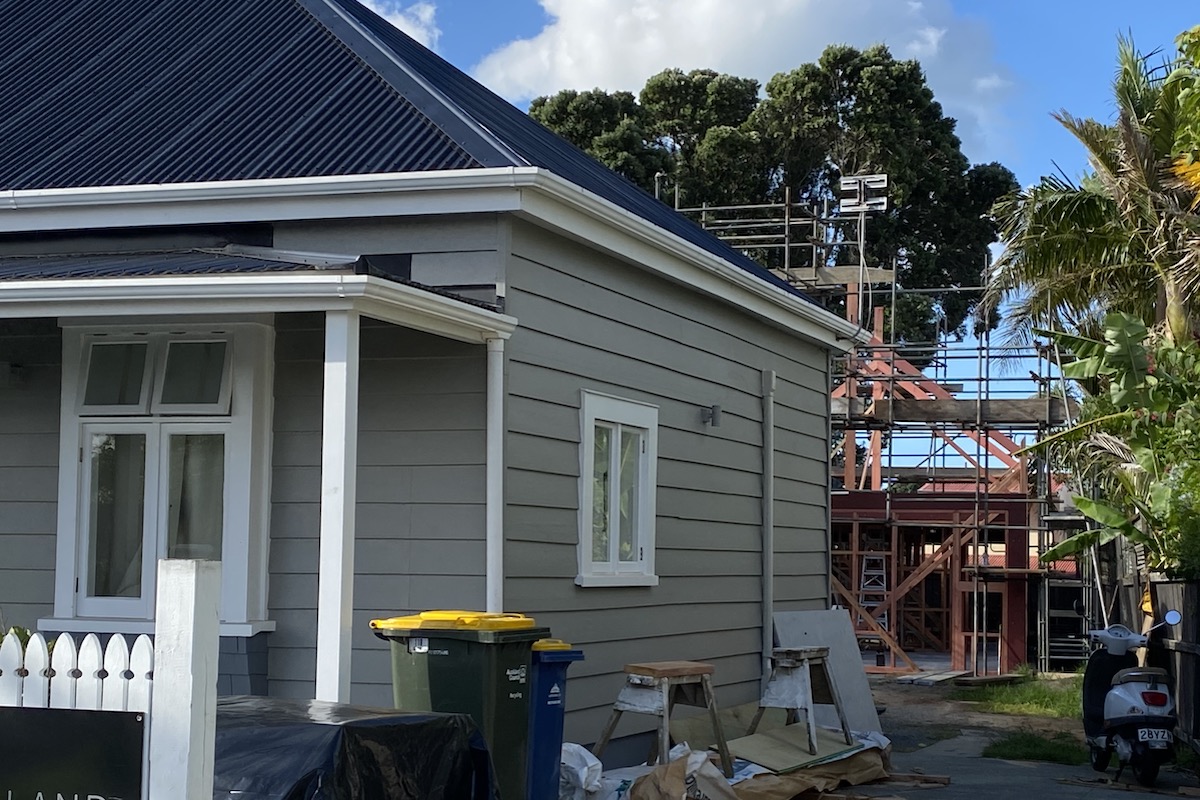What's New
21 April, 2021
Olympian’s new build dubs original house ‘minor dwelling’


Olympic windsurfing gold medallist Tom Ashley is building a new two-storey house in Devonport’s heritage zone – due to an apparently precedent-setting council decision that further opens up development on small sites.
In a major shift in town-planning convention, an existing cottage at the front of 110 Victoria Rd has been classified a minor dwelling, and the new build at the back of the property the main house.
Minor dwellings are permitted on the single-unit sites in Devonport’s heritage overlay, south of the golf course, but it has been widely accepted they would be built behind the existing house.
The Flagstaff approached a neighbour of the Ashley property, who asked not to be named, but said she had lost a lot of sun and privacy and felt she should have been notified by council.
“I believe this is the beginning of the uglification of our beautiful heritage suburb and people need to be aware that everyone is at risk of this happening to them.”
The project, on a 546 sqm section, submitted by Cherie Lane and Associates, breaches several Unitary Plan rules, such as: site coverage (36.8 per cent instead of 35 per cent); height-to-boundary regulations; and the floorspace allowable for a minor dwelling – 82sqm instead of 62sqm.
Council planners considered the effects on neighbours “less than minor” and approved the application without any public notification.
Devonport Heritage chair Margot McRae said: “We have huge concerns over this development at 110 Victoria Rd.
“Unfortunately this is just the latest in a trend that is happening all over Devonport – that is overdevelopment at the rear of properties.”
Auckland Council’s planning strategy is to completely disregard neighbours’ amenity values, like sunlight and privacy, she said.
“We have dealt with homeowners who call us in despair at what is being built on the next-door property. They are not consulted about the development because the council planners have considered the effects on neighbours to be minor.
“It’s approved without neighbours knowing anything about it until it starts getting build,” McRae said.
The situation was likely to get worse, with Council’s Plan Change 26 approved early this year allowing extensions to reach to within one metre of a rear boundary – down from three metres.
“We submitted again this and showed the council case studies of the effects of large rear extensions on neighbouring houses and on the heritage street value, but it was ignored,” McRae said. “The council has a strong pro-development mindset.”
Resource-consent decisions over the last few years increasingly disregarded the intent of the Special Character Area Overlay, she said. The overlay is supposed to protect heritage housing areas, including pre-1940 houses.
“While it may be hard to demolish a house, it seems there is open slather on building ugly rear extensions, which have a devastating effect on neighbouring houses and too often are highly visible from the street.”
Pressure on heritage areas is increasing. The government’s National Policy Statement on Development will soon come into effect. This directs all councils to increase intensification in cities and towns to create more housing.
Heritage groups are working to persuade councillors and the government to respect the heritage single-house areas, McRae said.
“But changing the council’s mindset is like trying to slow the Titanic – however we won’t give up fighting to protect Devonport.”

Please consider supporting The Devonport Flagstaff by clicking here:
